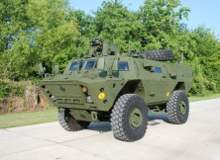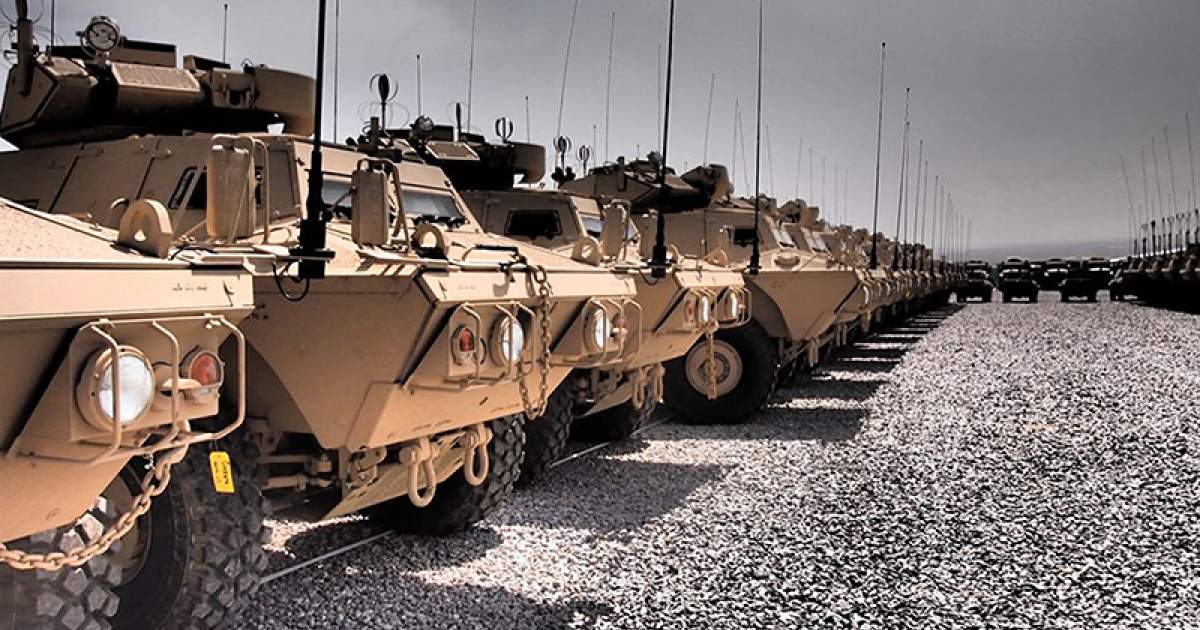Colin Parkinson
Army.ca Myth
- Reaction score
- 9,165
- Points
- 1,160
Camouflage, radio and track discipline, which are now in vogue again.What kind of counter-UAS systems did you have deployed with you?

Camouflage, radio and track discipline, which are now in vogue again.What kind of counter-UAS systems did you have deployed with you?
The design requirements had blast ratings, but there was no belief that the TAPV would result in an "utterly IED proofed vehicle." Everybody understood that that was impossible and there are always trade-offs.The design process from the outside looking in seemed to have been driven by the need to get a jump on the race between a vehicles protection and the corresponding increase in IED size and effectiveness .
One of the other factors seems to have driven by fear of what could happen to the political health of the government of the day by increasing casualties leading to decrease in popular support for the war this leading to a drop in popular support for the government.
One of the impressions that I got was that there was a.greart deal of pressure to design an utterly IED proofed vehicle . In the past that looked like the designers were shooting for a vehicle that withstand an IED in the megaton range.
The TAPV is very much a a one trick pony a niche vehicle if you will.
In war there are always adaptations, and each adaptation can in turn expose another vulnerability.We have those, as long as the passengers don't mind walking


In war there are always adaptations, and each adaptation can in turn expose another vulnerability.
The Israelis and Hezbollah were locked in a counter-insurgency campaign in the late 90s in the south-Lebanon "security zone", a strip of Lebanon that remained occupied by the IDF. There was a technical fence but also a series of platoon strongpoints and of course patrols. The campaign featured raids, ambushes, airstrikes, missile attacks and increasingly (on the part of Hezbollah) IEDs. These IEDs became more sophisticated and effective, with RCIEDs being very common and Hezbollah using foam-forms to disguise their IEDs among other things. The IDF Brigade Commander was killed in one such IED attack.
An Israeli adaptation to the IED attacks on troop rotations at the outposts was to use aviation as opposed to ground convoys for their bi-weekly reliefs. In 1997, two S65 helicopters conducting an outpost relief collided shortly after takeoff, killing all 73 IDF soldiers and aviators that were onboard the helicopters. This incident is seen as one of the contributing factors to the withdrawal of the IDF from the security zone in 2000.
So nothing is risk-free, and one adaptation can open a new vulnerability.
I wonder if it could be used as an artillery tractor.This is the biggest point that many haven’t grasped.
Frankly the only role I think they should be playing in Canada is given to the RCAF to provide a Base Security Vehicle.
For a Canadian Army vehicle they simply have too many negatives, to employ, while the RCAF has a need for something to ensure the F-35 Airfields can be secured and patrolled.
Tow a 81mm?I wonder if it could be used as an artillery tractor.


No. The Afghan theatre was front of everyone’s mind when this was bought. It is the leading edge of anti-Taliban technology. An ideal replacement for GWagon in that theatre, and probably an improvement on the RG-31 in many (though not all) of its role.My take is we bought a vehicle for peacekeeping …
I would think not.I wonder if it could be used as an artillery tractor.
The Artillery will get ACSV APCs for gun crew.Part of the crew travelled in the HLVW and the rest in either a Bison or TLAV depending on the year. The TAPV might fill that role but it has less personnel carrying capability, as configured, than either the Bison or TLAV.